You can sort the documents in the resource library using the filters below. Filters can be used singly or in combination. You can reset the filters at anytime using the "Reset" button. The search function at the top of the page is also available. If you would like to submit a publication to the resource center, please send it to childrenandaids@unicef.org
| Document | Download | Description | Year | |
|---|---|---|---|---|
| |
Nurturing care for children affected by HIV | In the early years, we lay down critical elements for health, well-being and productivity, which last throughout childhood, adolescence and adulthood. |
2020 | |
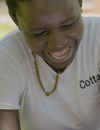
|
New Evidence and Programming Implications for Adolescent Pathways in HIV Care in Sub-Saharan Africa 2020.pdf | Adolescents have the lowest rates of retention in HIV care and ART adherence when compared to other age groups. |
2020 | |
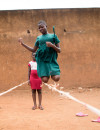
|
AGYW catalogue of available documents (spreadsheet) , AGYW repository navigation (slides) | The AGYW Programming & Implementation Repository contains resources relevant to AGYW programming that have been collated to support enhanced implementation and programming of Global Fund Catalytic Funding for HIV preve |
2020 | |
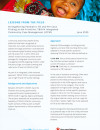
|
Lessons from the field - TB HIV iCCM | Community and primary health facility platforms have been recognized as important, but under-utilized entry points to address the large prevention, case detection and treatment gaps faced by young children with TB and/or H |
2020 | |
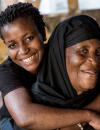
|
Framework: Improving HIV Service Delivery for Infants, Children and Adolescents (WEB) , Framework: Improving HIV Service Delivery for Infants, Children and Adolescents (PRINT) , Worksheet: Assessing the situation | The paediatric service delivery framework presents strategies to address bottlenecks across the continuum of care for each population: infants, children and adolescents. |
2019 | |
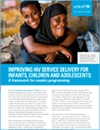
|
Brief: Improving HIV Service Delivery for Infants Children and Adolescents | In June 2019, UNICEF convened a group of about 40 global experts from 24 organizations and institutions to advance the collective thinking on paediatric HIV service delivery. |
2019 | |
| |
Q3 2019 Newsletter - Research Summary | Download a selection of abstracts related to children, HIV and AIDS published in peer-reviewed journals between July and October 2019. |
2019 | |
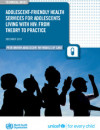
|
Adolescent-friendly health services for adolescents living with HIV: from theory to practice | This publication primarily seeks to define and clarify the key elements of adolescent-friendly health services to help ensure that adolescents living with HIV receive appropriate and effective treatment, summarize existing |
2019 | |
| |
Global snapshot , Sub-Saharan Africa snapshot , Eastern and Southern Africa snapshot , West and Central Africa snapshot | Global and regional epidemiological and response snapshots based on the UNAIDS 2019 HIV estimates. |
2019 | |
| |
For every child, end AIDS: A private sector investment opportunity , Eliminate MTCT of HIV: A private sector investment opportunity , Prevent HIV in adolescents: A investment opportunity , Close the HIV treatment gap for children: A private sector investment opportunity | The four investment cases above highlight opportunities for the private sector to engage in the global HIV response for infants, children and adolescents in partnership with UNICEF. |
2019 | |
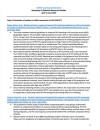
|
Research Summary - Q2 2019 Newsletter | The Learning Collaborative draws on scientific research published in the second quarter of 2019 to bring |
||
| |
Research Summary - Q1 2019 Newsletter | 2019 | ||
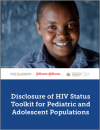
|
Disclosure of HIV Status Toolkit for Pediatric and Adolescent Populations | This toolkit was developed by the Elizabeth Glaser Pediatric AIDS Foundation (EGPAF) with funding from a consulting agreement with Johnson & Johnson, in support of the New Horizons Advancing Pediatric HIV Care Collabor |
2019 | |
| |
Dakar Call: Renewed Commitment , Appel de Dakar: Renouvellement d'Engagement , Apelo de Dakar: Renovação de Compromisso | At a high-level meeting in Dakar, Senegal in January 2019, UNAIDS, UNICEF and WHO urged countries in Western and Central Africa to strengthen their commitments towards EMTCT and universal coverage for paediatric testing an |
2019 | |
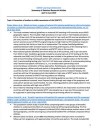
|
Research Summary_Q4-2018-Newsletter.pdf | 2018 | ||
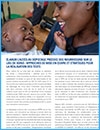
|
POC EID Implementation Approaches - English , POC EID Implementation Approaches - French | Expanding access to POC early infant diagnosis: Implementation approaches and testing strategies |
2018 | |
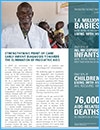
|
Strengthening Point-of-Care Early Infant Diagnosis ENGLISH | A game changer for paediatric HIV, point-of-care early infant diagnosis (POC EID) is an innovative approach to strengthen EID programs, and improve health outcomes for the youngest and most vulnerable children. |
2018 | |
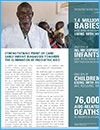
|
Strengthening Point-of-Care Early Infant Diagnosis FRENCH | Susceptible de changer la donne en matière de traitement pédiatrique du VIH, le dépistage précoce du nourrisson (DPN) sur le lieu de soins est une approche innovante visant à renforcer les programmes de DPN et il amé |
||
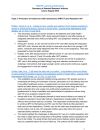
|
Summary of Research Articles - Q3 2018 | 2018 | ||
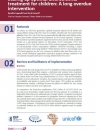
|
Scaling up optimal antiretroviral treatment for children: A long overdue intervention | To achieve an AIDS-free generation, optimal treatment options for all infants and young children living with HIV must be available, tolerable and most importantly, effective. |
2018 |